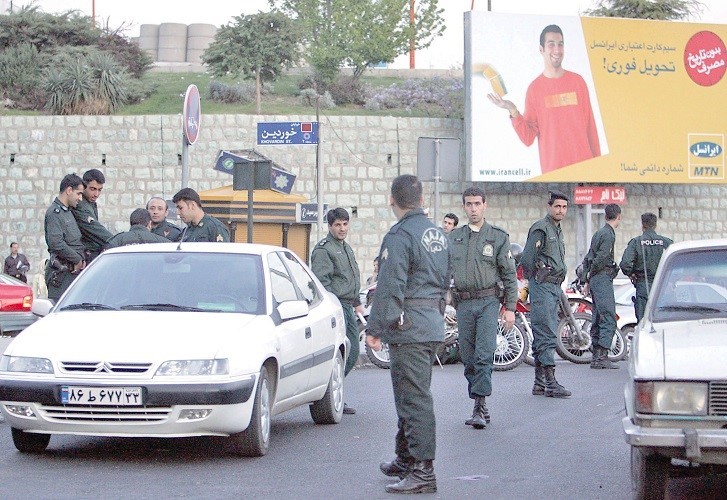PARIS — Rights groups voiced alarm Tuesday over the extent
of an Iranian crackdown on a Kurdish-populated city that has become a
flashpoint for nationwide protests that have now lasted over three weeks.
اضافة اعلان
Iran’s clerical authorities have been shaken since
mid-September of protests that erupted after the death of
Mahsa Amini, a 22-year
old Iranian of Kurdish origin, who had been arrested by the notorious morality
police.
Despite the use of brutal force by the authorities
that activists say has left dozens dead, and led to hundreds of arrests, there
is so far no sign of the protest movement coming to an end.
Protests have been especially intense in the city of
Sanandaj in the western province of
Kurdistan, Amini’s home region, where
rights groups fear heavy casualties and accuse authorities of resorting to
shelling of neighborhoods.
The Norway-based Hengaw rights group said an Iranian
warplane had arrived at the city’s airport overnight and buses carrying special
forces were on their way to the city from elsewhere in Iran.
Hengaw said at least seven people had been confirmed
killed by the security forces in Sanandaj and other Kurdish-populated cities
since Saturday.
Amnesty International said it was “alarmed by the
crackdown on protests in Sanandaj amid reports of security forces using
firearms and firing teargas indiscriminately, including into people’s homes”.
On a visit to Sanandaj, Interior Minister Ahmad
Vahidi reaffirmed Tehran’s position — strongly contested by rights groups —
that the unrest had been “supported, planned, and carried out by separatist
terrorist groups”.
‘All together!’
The New-York based Center
for Human Rights in Iran said there was a risk of a similar situation in
Sistan-Baluchistan province in the southeast where activists say more than 90
people have been killed since September 30.
 Iranian morality police stand to check women for their clothing and hair during a crackdown to enforce Islamic dress code in Tehran on April 22, 2007. (File photo: AFP)
Iranian morality police stand to check women for their clothing and hair during a crackdown to enforce Islamic dress code in Tehran on April 22, 2007. (File photo: AFP)
“The ruthless killings of civilians by security
forces in Kurdistan province, on the heels of the massacre in
Sistan-Baluchistan province, are likely preludes to severe state violence to
come,” said its director Hadi Ghaemi.
Analysts have said the protests are proving
particularly challenging for the authorities under supreme leader Ayatollah Ali
Khamenei, 83, due to their duration and multi-faceted nature, ranging from
street demonstrations to individual acts of defiance.
In a new development on Monday, protests spread to
Iran’s oil refineries with videos showing striking workers burning tires and
blocking roads outside the Asalouyeh petrochemical plant in the southwest.
They could also be heard shouting slogans including
“Death to the dictator” and “Don’t be scared, we are all together!”.
Similar actions
were in progress on Tuesday with Oslo-based group Iran Human Rights saying
strikes were in progress in Abadan in western Iran and Bushehr to the south.
State news agency IRNA denied there was any strike
action in the area. The governor of Asalouyeh, Ali Hashemi, told the Fars news
agency that “opportunists” who had caused fires in the area had been arrested.
University campuses and even school classrooms have also
seen repeated protests, with students at the Amir Kabir University of
Technology in Tehran on Monday shown chanting anti-regime slogans.
Read more Region and World
Jordan News



